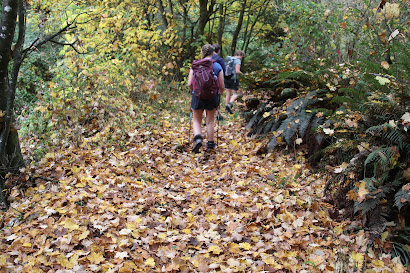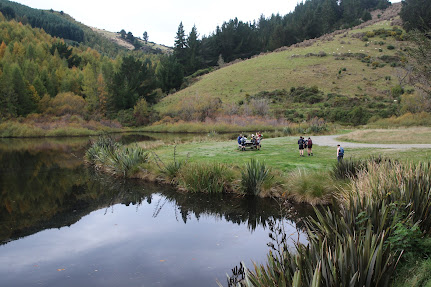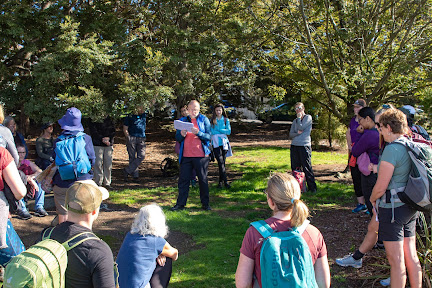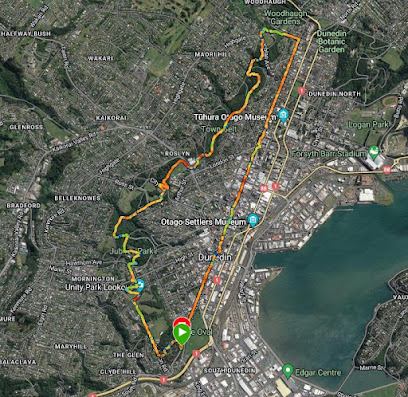Like the first time the OTC undertook this trip in May 1930, we gathered at 1pm on Saturday afternoon. With clear, blue skies and the thermometre reaching 20+ degrees, it wasn't surprising that 18 people turned up for the walk. We gathered at the Smaills Beach carpark and headed across the sand dunes to the beach. With quite a number of sunbathers and a few surfers bobbing on the waves, there was talk of a swim after the walk but first we had 300m to climb from Smaills Beach to Highcliff Road. A small number of the group opted to take the Karetai Track while the majority took the more adventurous route from the beach, around the cliff edge to Maori Head.
As we climbed away from the beach, the views really started to open out behind us. We had an excellent vantage point to see the surfers on Smaills Beach attempting to catch a wave and further back to Lawyers Head with the hills of St Clair and Saddle Hill behind. The views down the coast extended as far south as Taieri Mouth thanks to the perfect weather. Despite the easy walking, there were plenty of stops to drink in the outstanding views often followed by the comment that we are so lucky to live in such a beautiful part of the country and with so many great walking opportunities so close to the city. Dunedin had certainly turned on another 'Dunner Stunner' day.From Maori Head we skirted around the cliff edge to join the Karetai Track at Pudneys Cliff where we took a small detour below the sheer rock buttresses to the cliff viewing area. I wouldn't recommend the detour to Pudneys Cliff during windy or wet conditions as the track is narrow and slippery but as the sun was shinning and the temperatures in the early 20C's we had no hesitation in venturing to the cliff viewing area. From here we had stunning views along the impressively steep cliff faces that dropped 140m vertically straight down to the sea below.
Returning to the Karetai Track we continued up the constant slope of the hill for about 1km to the Karetai Road where we stopped for a snack and drink in the cool shade of some large trees. After this much needed rest the next part of our journey saw us follow the road, climbing to 300m above sea level before reaching the junction of Highcliff Road. The Karetai Road is a little used sealed road and we had ample opportunity to stop and admire the views overlooking the green farmland with the city and coastline stretched out behind. Highcliff Road is a much busier road and with no footpath on either side, we stuck to single file, keeping well the side to avoid getting in the way of traffic. We followed the road for 2km to the Soldiers Monument and Peg 41 track. During the walk along Highcliff Road, we were spoilt for choice with views and with such a beautiful day we did not want to rush.Regrouping before the short but steep 60m climb from Highcliff Road to the Soldiers Monument, it was a complete contrast to the last time we had been here about a month ago for trip#48 Last time the wind had been so strong that we could barely stand at the monument where as today it was calm, with not a breath of wind. We enjoyed the stunning views of the harbour from such a great viewpoint. The rest of the trip was an easy wander down the Peg 41 track, hugging the fence line most of the way down the hill we negotiated a paddock with cows, another with gorse and finally an empty paddock with the final stretch though a small patch of native bush bordering the Tomahawk Lagoon. The colours of the setting sun were reflected in the calm waters of the lagoon where the resident ducks and swans were settling down for the night. After the lagoon, it's about a 1.5km road walk back to Smaills Beach and the cars. As time was getting on towards 5pm with the sun starting to set it was decided that the time for a swim was past and everyone was happy to climb in the car for a ride home. It was a very pleasant afternoon walk of 12.3km over a leisurely 3 hours 45 minutes

























































